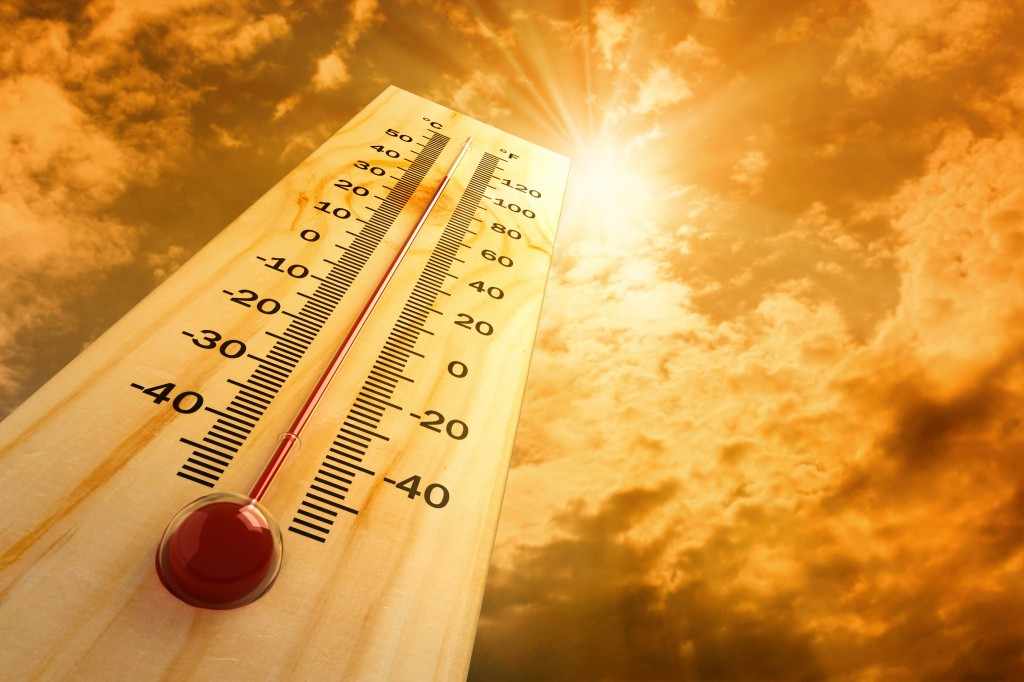-
Featured News
Scorching summer temperatures create health concerns

Dangerously high temperatures are predicted in many parts of the U.S. this week, especially in the Southwest. The National Weather Service is estimating temperatures might hit at least 120 degrees Fahrenheit in Arizona and Southern California. But no matter where you are, it's important to remember the signs, symptoms and treatment for heat-related illnesses.
Heatstroke occurs when your body temperature rises rapidly and you're unable to cool down. It can be life-threatening, damaging your brain and other vital organs. It may be caused by strenuous activity in the heat or being in a hot place for too long. Heatstroke can occur without any previous heat-related condition, such as heat exhaustion.
Heatstroke signs and symptoms include:
- Fever of 104 F (40 C) or greater
- Changes in mental status or behavior, such as confusion, agitation or slurred speech
- Hot, dry skin or heavy sweating
- Nausea and vomiting
- Flushed skin
- Rapid pulse
- Rapid breathing
- Headache
- Fainting, which may be the first sign in older adults
If you suspect heatstroke, call 911 or your local emergency number. Then, immediately move the person out of the heat, and cool him or her by whatever means available. For example:
- Put the person in a cool tub of water or a cool shower.
- Spray with a garden hose.
- Sponge with cool water.
- Fan while misting with cool water.
- Place ice packs or cool wet towels on the neck, armpits and groin.
- Cover with cool damp sheets.
Let the person drink cool water or other nonalcoholic beverage without caffeine, if he or she is able.
Begin CPR if the person loses consciousness and shows no signs of circulation, such as breathing, coughing or movement.
Dr. Ruth Bolton, regional director of Mayo Clinic Health System Urgent Care, says, "Heat illness is exactly what it sounds like — a sickness caused by heat. Heat illness can take multiple forms — each ranging in severity. The different types of heat illness, from mildest to most dangerous, include heat cramps, heat exhaustion and heatstroke." She adds, "If you’re concerned you or someone else may be experiencing heatstroke, seek medical assistance immediately. Heat stroke is a medical emergency."
Dr. Bolton says that, as heat illness progresses from cramps to exhaustion to stroke, the symptoms become more extreme. "Fortunately, heat illness starts with mild symptoms, which you should heed as a warning to take precautions to prevent further complications," says Dr. Bolton.
Symptoms of heat cramps include:
- Muscle cramps — usually in the hands, calves or feet
- Heavy sweating
- Fatigue
- Strong thirst
- Nausea
Symptoms of heat exhaustion include signs of heat cramps as well as:
- Damp, cool skin with goose bumps when exposed to heat
- Dizziness
- Faintness
- Headache
- Low blood pressure
- Weak, rapid pulse/heartbeat
- Dark-colored urine
Follow these steps to treat and prevent heat illness:
- Drink cool liquids. Water and sports drinks are the most effective warm-weather drinks. Avoid alcohol, as it can make you more dehydrated.
- Shed extra layers. Ditch long sleeves, gloves or any other type of clothing that are contributing to an elevated body temperature. Ensure your clothes are loose enough, so your body can breathe.
- Take a break somewhere cool. Find shade or an air-conditioned building to take refuge on a hot summer’s day. Put cold water on your skin during your break, too. This will help cool down your skin and reduce your overall temperature.
- Avoid sunburn. Wear a sunscreen with a sun protection factor of at least 30, s well as sunglasses and a wide-brimmed hat. These measures will help you avoid sunburn, which inhibits your body’s ability to cool itself.
- Don’t leave anyone or pets in a hot car. Each year, multiple children die after being left in hot cars. This is never a safe practice — even if you crack the windows.
- Prepare your body. Get adjusted to the change in weather if you’re not familiar. Don’t overexert yourself. Drink plenty of fluids. Take frequent breaks in cool places.







